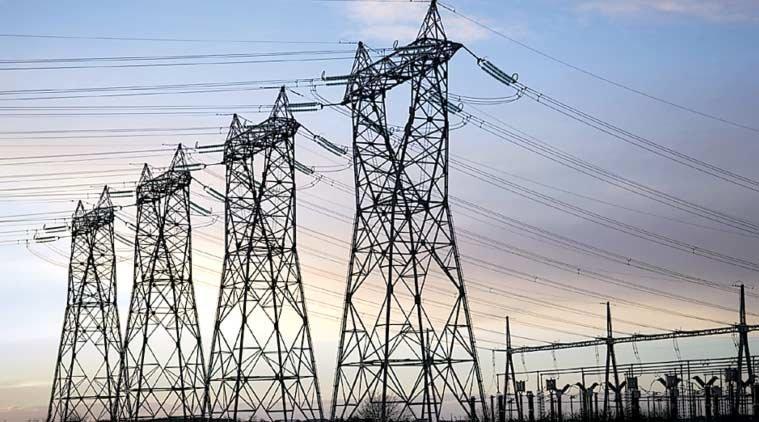The Crisis in the Electricity Sector is not Just About NPAs

The electricity sector makes news nowadays only as a financial crisis. In this framing of the issues as one of non-performing assets (NPAs) or bad loans of banks, the real crisis – the crisis of the electricity sector -- is wished away. The brutal truth is that the restructuring of the electricity sector that started in the 1990s with Enron economics, and dismantling of the State Electricity Boards (SEBs), followed by the 2003 Electricity Act, have led to the cause of the current crisis. The NPAs of the banks are only its logical consequence.
According to newspaper reports, the NPAs of privately-owned electricity generating companies stand at Rs 1.72 lakh crore, while the total stressed assets of generating companies is of the order of Rs 4 lakh crore! To this, we should add the accumulated losses of the state-owned distribution companies of Rs 4 lakh crore as well, of which Rs. 2.32 lakh crore have been taken over by the state governments under the Uday scheme. The total losses of the electricity sector today is of the order of an astronomical Rs. 8 lakh crore!
Let us compare this to the pre-reform period, when the sector was largely state-owned. In 1992-93, the accumulated losses of the sector were a paltry Rs 1.25 crore. By 2003, or one decade of economic reforms, it had reached Rs 25,000 crore. From 2003 to today, the losses of the sector have ballooned 32 times! If the objective of reforms was to restore the health of the electricity sector, what we have witnessed is just the opposite. With each decade of reforms, we have witnessed a much bigger crisis in the sector.
The crisis in the sector has grown in tandem with the growth of private power in the Indian grid. In 2002, privately-owned generating assets were only about 10.5%; today (July 2018) these are 45.2%. As the share of private generation has grown, so has the crisis of the electricity sector. Out of the 75,000 MW of private power thermal assets, the Standing Committee of Parliament on Energy in its Report (August 2018), believes that 60,000-65,000 MW may be under financial stress, most of it funded by public sector banks.
In all this talk of crisis in the electricity sector, there is no discussion on the path of reforms that has led to this pass. Instead, the “solution” proposed is to further reforms. The current proposal by the Narendra Modi government is to separate the electricity passing through the wires from the wires themselves – a magical feat indeed – under the Electricity Amendment Bill 2014 placed in Parliament. The state governments will own the electricity distribution infrastructure, while private “distribution” companies will buy and sell electricity travelling through these wires. This is a new “innovative” twist to the reforms of privatising profits and “nationalising” the losses.
What were the key elements of the electricity sector reforms that have led to this crisis? One element was separating generation, transmission and distribution which were earlier integrated as either state-owned or privately-owned utilities. The second was to de-license the setting up of generating plants. Any entity could set up a power plant without ascertaining whether it had an assured coal supply, a means of evacuating power through transmission lines, and whether its cost of production of power was viable.
Separating generation from transmission and distribution meant that state governments, who owned the distribution companies, could not generate the bulk of their required power by themselves. They had to buy it from NTPC, or private players at high costs. Quite often, they had to idle their power stations for even up to six months leading to increased losses for the states.
De-licensing of generation has meant that we now have surplus capacity – surplus in the sense of what the distribution companies can absorb – funded by public sector banks, which are now turning into stressed assets.
Of course, the words stressed assets or non-performing assets give the impression that the “assets” are not performing, not that big private capital has milked the public sector banks of money. In banking parlance, the banks will have to now take a “haircut” on their loans up to even 60%, meaning that 60% of their loans, made with people’s money, will have to be written off.
The crisis in the electricity sector did not originate from the “inefficiency” of state-owned utilities, as was argued. The issue in the 1990s was that the cost of generation and distribution was outstripping people’s ability to pay. The viability of agriculture or industry depends on their input costs, of which electricity is a critical one.
One way of bringing down the deficit was to look at economies of scale: build bigger power plants and expand our equipment manufacturing facilities, which would have brought down cost per unit of electricity. This is what China did. It brought down costs of generation by massively expanding its equipment manufacturing and the size of plants. India, instead, starved the electricity sector from 1990 to 2003, and used this lack of expansion to induct private power into the grid for providing “efficiency” and mobilising private capital. It now transpires that this private capital was borrowed from public sector banks; or our savings.
Why has the cost of electricity gone up so rapidly after the reforms? One of the reasons is now public. In the Department of Revenue Intelligence (DRI) case against Adani, it has been shown that Adanis imported coal at inflated costs by billing through intermediaries in tax havens, and passing on these costs to the consumers. The amount involved is Rs. 60,000 crore! These higher fuel costs are then charged to the consumers through electricity tariffs.
The second reason is the inflated cost of equipment, which is also passed on to the distribution companies. This is what we call ‘Enron economics’. The modus operandi is - buy equipment from the supplier at a certain cost, cycle the price through a tax haven, and finally show a much higher capital cost. DRI has filed another case against Adani for over-invoicing equipment. This higher capital enters the tariff fixed by the electricity regulator. It is this higher cost electricity on both counts – capital cost and fuel cost -- being passed onto the distribution companies that has created the crisis on the distribution side.
Interestingly, the Modi government has made no effort to force the public sector banks who helped Adani do this over invoicing. Instead, DRI is taking this up in foreign courts to force Indian banks to divulge information regarding possible fraud committed by an Indian entity both under the jurisdiction of Indian law!
All this means the widening of the gap between the cost of electricity and what the distribution companies have to pay. The more it widens, the more the losses faced by distribution companies!
On the other side are the capital costs of these private power plants now becoming stressed assets. It now transpires that the private sector brought no additional capital to the table. It borrowed from public sector banks for setting plants that are now proving to be unviable. The parties involved are Tatas (Mundra Ultra Mega Power Project) Adanis, Reliance, Vedanta, and a host of other big players. All of them are not showing up as NPAs, some of them have been declared through semantic jugglery as stressed assets.
If the DRI case is a pointer, the private promoters have taken out their share of money through over-invoicing. Or using Enron economics. This is where private capital is really efficient – their investments can becoming non-performing, but not their bank balances. And there is enough in various tax havens -- Cayman Islands, Bahamas, Antigua, etc. -- to fight extradition abroad a la Vijay Mallya, Nirav Modi of Mehul Choksi.
The hard truth is that there is no way out of the crisis through the so-called market reforms. What we need to do instead is to reform the SEBs created under the 1948 Act. This is what the All India Power Engineers Federation has asked in its Resolution in Hyderabad (August 18, 2018) – integrate the state power utilities and scrap the Electricity Amendment Bill (2014). But is the Government listening?
Get the latest reports & analysis with people's perspective on Protests, movements & deep analytical videos, discussions of the current affairs in your Telegram app. Subscribe to NewsClick's Telegram channel & get Real-Time updates on stories, as they get published on our website.
























